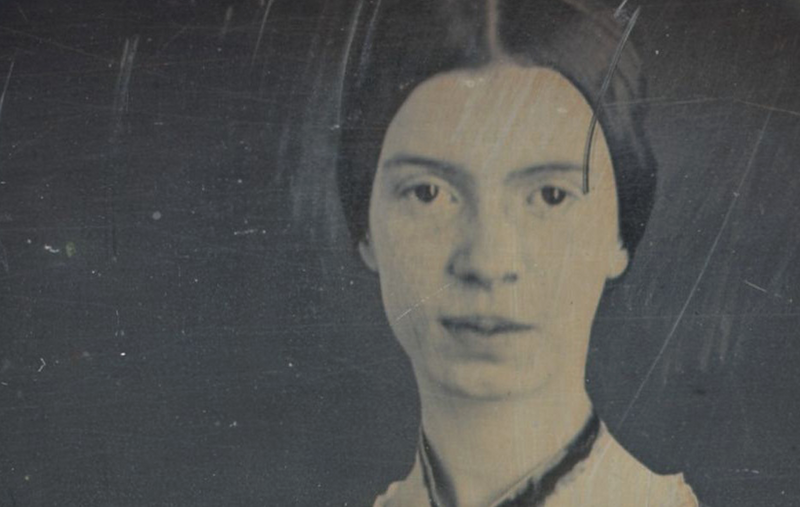Back in 1975, when I started writing poetry seriously at age fourteen, North Carolina was still mostly made up of tobacco fields. But our home, near my father’s job at the university campus, felt secluded from the rest of the state among pine-covered hills. Its large deck made you feel you were in a treehouse, and its sylvan surroundings put the symbolic vocabulary of American lyric—the moon and the wind, the beech trees and wood thrushes—at my disposal. My mostly solitary adolescent life, ensconced in my perennially hard-to-heat bedroom, led to productive study and some pretty good poems. I typed out my best works on creamy stock with my mother’s mountainous Remington typewriter.
All that good feeling about writing poetry changed when I went to college. Why it changed—and why I decided to pursue an academic career in literary criticism instead—reveals a problem with academic feminism, which demands conformity not just to its ideology, but in my experience, to a certain literary style as well.
Feminist conformism—based on the paradoxical belief that all women’s writing lays claim to political power for women as a class but that individual excellence is only achieved through denying the sexed feminine body—has not only failed to produce excellent poets. It is actively destroying excellence in the one area where American women traditionally outwrite men: lyric poetry.
The Woman in the Chair
I remember exactly where I was when I learned to think cynically about my body—and my writing.
It was 1979. I was sitting in a darkened auditorium on the campus of my new college, a small Quaker school in the tobacco town of Winston-Salem, North Carolina, with maybe thirty other freshmen. I was sure that I was special. After all, we had been told that we were above average. We were going to be introduced to big ideas and taught to grapple with complex topics. All that was why we were invited then and there to watch a play that dramatized the struggle for women’s rights as part of larger, global quest for human rights.
Three chairs were placed on stage, filled by two men and one woman. The first man was blindfolded. The hands of the second man were bound. Both men were supposed to be political prisoners, we assumed. In the third chair, a woman sat with her legs crossed, her hands held in front of her lap to fend off attackers. The men looked capable of defending themselves, despite their bonds. Their bodies exuded strength and power. But the woman seemed constrained by something else—by fear.
The injustice of having a woman’s body leapt out at me in its full symbolic and metaphorical dress. Clearly, someone had been lying to me. My female body—so vulnerable, like that of the woman on the stage—would have to be overcome if I was truly going to be special. The female body was wrong—my body was wrong—because the world was unjust. It was my responsibility to reshape them both.
I left that performance with a lasting sense of being impaired, alienated from both my body and my surroundings. As I walked back to dorm, passing under the high Georgian columns of the music building, a few flakes of snow fell through the still-summery leaves. I had always loved snow. I thought back on the time when snow made my whole being feel healed and pure. Now, I had a new sense of being separated from its natural beauty. How could I have ever been so naïve as to think that a surprise snowfall could change anything?
My head echoed with the voices I had heard. I must fight for power in a world that is stacked against me. I must rise up and claim what is mine.
The Price of Liberal Feminism
My drift into liberal feminism after that night was a natural progression from my upbringing. My parents were romantic nonconformists—the type that emerges when life is materially comfortable enough that maintaining social norms for the next generation seems less important than telling them not to go along with the crowd. Although we didn’t have any pictures of religious figures in our house, my mother did display portraits of Emily Dickinson and Henry David Thoreau cut out from newspapers in the living room like family saints. They were models of my parents’ liberal intellectual values, values that made them immune to moral turpitude—or so they thought.
On my mother’s bookshelves, volumes of Dickinson’s poetry stood next to the manifesto of feminist icon Betty Friedan. When The Feminine Mystique came out in 1963—when I was two years old—it seemed logical that feminism would champion women’s literature and that women writers in turn would enjoy greater artistic freedom, and chronicle the greater equality afforded to women by anti-discrimination law.
Unfortunately, the mutual illumination of art and feminist theory turned out to be very one-sided. Feminist theory consumed women’s writing as its fuel, but as it burned brighter, the damage became clear: a woman writer could write only by splitting off her sexed body—the one vulnerable to assault, the one designed for fertility—from her mind.
The tragic deaths of two poets whose writing was at the same time feminist and yet anchored in women’s bodily experiences of motherhood and marriage—Anne Sexton’s suicide in 1974 and Sylvia Plath’s in 1963—seemed to confirm that radical feminist theory was right: there could be no compromise with women’s domestic roles. Even Denise Levertov’s late-life conversion to Christianity in the eighties led to a widespread dismissal of her work among academic feminists.
Liberal feminism appealed to me and other student poets of my generation by offering us self-indulgence, convincing us that poetry would find its highest expression in our emotional outbursts, not in our insights. Activist teachers encouraged us in this vein, reassuring us that our crippling fears were just part of the struggle to write as a woman.
They were not. They were the worst symptom of a highly dualistic sense of self, the one I had acquired as a freshman spectator all those years ago.
The Risk of a Woman’s Body—and Mind
For many years, I was not aware that there was any reason that I should question feminist theory. It did not occur to me that my intellectual heroes might not be telling me, or were even themselves aware of, the whole truth. When I asked myself whether to pursue academia, it was more a question of what career path could I more easily reconcile with the lifestyle I wanted. Now, I realize that I was making another choice, too—a choice between the beauty of a nature outside me that was also part of my human nature, or the attempt to fashion a self that would be free from the messiness and risk of my female biology.
The presenters of that play—with the three chairs on stage—promised me liberation from my fertile, vulnerable body. Liberal feminism offered me a feeling of being a rebel, a nonconformist to my sex. Although I didn’t recognize it at the time, the other path—the snow falling through open leaves—offered the risk of writing poetry with my mind and my body, together as an integrated whole. Such writing might tell me things that I didn’t know—that I might not even want to know—about myself and about my world.
Writing demands the total engagement of the body, mind, and soul. All three were at war in me and would be divided for a long time yet. Sure, I could mimic the confessional style, but it wouldn’t be me. So I decided to conform to liberal feminist theory. I published one or two poems in university journals, and then gave up poetry-writing as a lost cause. The next fall, I left to begin a doctoral program in Comparative Literature with a minor in Women’s Studies.
By the mid-eighties, the concept of the lyric poem as expressing common human identity for women was being replaced by that of poetry as the language of ethnic and gender identity. In her 1993 essay collection What Is Found There, Adrienne Rich wrote a piece called “The Hermit’s Scream,” in which she accuses feminist writers of failing to grasp the violent rhetoric that she felt was necessary to respond to the political climate of the seventies. To intimidate women writers and to discourage them from expressing a common human identity for women or minorities, Rich insists that revolutionary rhetoric and one raw style are legitimate for a global feminist movement. She compares Elizabeth Bishop’s spare lyric poem “Chemin de Fer” to Audre Lorde’s prose poem, “Power,” suggesting that Lorde’s bald rage must be seen as the ultimate goal toward which writers like Bishop were headed all along. The message is clear: if poetry is going to be activist, it can no longer accommodate a woman’s voice. The hermit must be replaced by the mob.
I was well into my graduate program by then, and poetry was not my focus anymore. But as I look back on my graduate school days and compare them to our contemporary climate, I find it interesting that materials such as Rich’s essay are again being promoted in courses on how to teach social justice in the humanities. The demand for conformity to activist rhetoric in poetry written by women is making a distinct comeback.
For me, the decision to stop writing as a woman and start writing as a feminist critic was a trade-off. On the one hand, it allowed me to write the kind of academic prose that would receive institutional support. I wouldn’t be alone with my writing anymore. It also got me off the hook. I didn’t have to admit the truth, to others or even to myself: I didn’t like what feminist poetry had become. Obsessed with the female body—graphic descriptions of depression, lesbian sex, self-injury—it had turned into exactly what it set out to destroy: the objectification of women.
I wonder how many other professors are not saying what they secretly think. I wonder how many other lovers of literature see that liberal feminism’s rejection of a woman’s fertile, sexed body has made women’s poetry conformist, monotonous, and lifeless.
Even though the relationship between lyric poetry written by women writers and liberal feminist theory turned out to be very one-sided, this need not be true of sex-realist feminism. Perhaps the emergence of this new school of feminist thought will kindle into flame an altogether new and life-giving nonconformity in women’s writing. If that is so, then, once more, women will be able to help us all to understand what it means to be fully human in language that is at once incarnational and symbolic.



